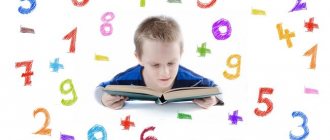What is a crisis?
In short, the newborn crisis in psychology is the very fact of the birth of a child. Such a sharp change in comfortable conditions in the womb to new conditions causes great stress in the baby.
The causes of this crisis are divided into two groups:
- physiological (the child is no longer connected by the umbilical cord to the mother, changes the way he eats, enters the air, feels cold, bright light);
- psychological (the child experiences anxiety and insecurity, because he no longer feels the mother’s warmth with his whole body).
The main characteristic of the neonatal crisis is weight loss in the first days after birth. To this are added the baby’s cries, with which he gives a signal about the dissatisfaction of basic needs, and the manifestations of conditioned reflexes.
According to L. S. Vygotsky, the neonatal crisis lasts from 4 to 6 weeks of a child’s life, until he develops a revival complex. Before this, the baby has not formed a single act of behavior; he sleeps almost all the time.
This means that without the care and attention of a mother or another loved one, the baby will not be able to survive. Such dependence on adults and the inability to express one’s desires provokes further active development of all the child’s systems.
First month crisis (usually begins between the 4th and 5th weeks).
After several weeks of “hibernation,” which is often observed by parents after childbirth, when the baby only eats and sleeps, the child takes a serious step in physical development and improvement of the senses. Here are the signs of this age leap:
- The baby begins to show interest in everything.
- The amount of daytime sleep becomes less.
- Frequent whims
- Requires mom to be nearby.
- The quality of sleep deteriorates.
Possible complications
Adults play a huge role in the successful adaptation of the baby to changed conditions. An absolutely defenseless baby cannot withstand changes in the environment (temperature, light, noise) on his own; without the care of his mother, he will simply die.
At the same time, simple care (feeding, changing clothes, bathing) is not enough for the child. If the mother does not establish emotional contact with him, then this period will take a longer time and can provoke developmental delays.
According to L. S. Vygotsky, it is the newborn crisis that forms a child’s basic trust in the world and confidence in his own safety. For this stage to be successful, the newborn must feel the calmness and love of a loved one, understand that he is always there and responds to his cry.
Through the mother, the child develops his entire attitude towards the world, which will have an impact on adult life. When trust in her is formed, then:
- the world is perceived as reliable and stable, there are people in it who will understand and provide support and care;
- all difficulties in life, problems and age-related crises are endured less traumatically and more persistently.
The main difficulty is that a young mother cannot always give her child everything he needs during this period. Sometimes a newborn crisis coincides with postpartum depression of the mother. The birth of a baby provokes a personal crisis in her: the mother is not always confident in her abilities, that she knows how to act correctly in any situation, she cannot accept that she no longer belongs to herself and does not manage her time as she wants.
To prevent this from happening, there must be someone close or experienced person next to the mother and child. Anyone who can provide support: convince the woman that no one understands the baby better than her, will allow her to enjoy contact with him without worrying about household chores, and will simply be ready to help.
What not to do
- From the first days of a newborn, you cannot actively interact with him and oversaturate the day with emotions and impressions, or show too bright toys. The child may become oversaturated with impressions and become restless. Also, you should not constantly change the interior of the nursery. At this age, the child feels more comfortable and calm in a familiar room.
- You cannot leave a crying child alone to “cry it out.” There is an opinion that you should not pay attention to the baby’s crying after all his needs are met. However, such a recommendation is controversial, since at such moments the child feels abandoned and unnecessary, he is lonely and scared. If you regularly leave your child to “cry it out,” he may not develop the sense of trust necessary for optimal psycho-emotional development. All educational techniques must be justified and reasonably dosed.
The further development of the child will largely depend on how the newborn period passes. The result of its successful completion is the normal functioning of the baby’s body, prolongation of wakefulness and a lively reaction to the appearance of the mother. These indicators in the development of a child indicate that the neonatal period is ending and a new stage of development is beginning - the period of infancy.
If you liked the article, please share a link to it
How to organize the adaptation of a baby
To avoid all possible complications and to develop a newborn’s basic trust in the world, parents should know how to behave during a newborn crisis:
- monitor the temperature in the room that is comfortable for the baby;
- feed the baby on demand as much as he needs;
- establish communication: talk kindly to the baby, address him by name, accompany all procedures with communication;
- monitor the microclimate in the family: be calm, attentive and caring parents - the child picks up on the emotional state of adults;
- Carry out light exercises and massage for the baby;
- for comfortable bathing, it is recommended to use a diaper or a soft towel: a baby wrapped in it, remembering a similar state in the mother’s stomach, will perceive the water less anxiously;
- do not overload the places where the baby spends time with bright colors and details - this can greatly irritate his nervous system (it is better to stick to light pastel colors);
- try to create a daily routine for the child and monitor its compliance.
There are many views on the development and upbringing of children, which sometimes contradict each other. Young parents don't always understand what advice to take with skepticism.
In order not to harm your baby in times of crisis, you need to know exactly what not to do.
- You should not start the active development of the child from the first days: surround him with many bright toys, pictures, songs, etc. This can oversaturate the baby with emotions and impressions and lead to anxiety. After all, a very important moment of development at this time is the emergence of auditory and visual concentration. He must learn to catch sounds and objects, but it is still difficult for a baby to react to a large number of them.
- Don't leave your baby alone when he cries, even if you are sure you have met all his needs. The baby will not scream and cry for no reason; perhaps he just needs parental attention at this moment. The situation when he lies and gets very upset without getting a reaction makes him feel very anxious and lonely. This violates his basic trust in the world.
Crisis of the first year (usually begins from the 49th to 56th week)
The baby is getting better at moving around - he has learned to crawl, and maybe even walk, and is becoming more independent. At the same time, the baby’s nervous system does not have time to process a large flow of new information.
Signs of this age leap:
- The baby practically hangs on his mother, clinging to clothes. Requires more physical contact.
- Jealousy when mom pays attention to someone else besides him.
- Disobedience.
- The mood changes sharply.
Mother-child dyad
With the physical separation of mother and child, their psychological unity does not end. In psychology, this phenomenon is called the “mother-child” dyad; this period can also be called the fourth trimester of pregnancy.
Many mothers notice with interest that they really create some kind of elusive connection with their baby. For example, they distinguish different shades of crying and whims, when each has its own reason, or wake up in the middle of the night exactly a couple of seconds before the child wakes up, as if someone specially woke them up.
While the baby is helpless, he perceives and learns everything through a significant adult: he satisfies his needs, gets to know himself and his emotions, and forms an attitude towards the world around him. If he has good contact with his mother: she carries him in her arms, treats him kindly, smiles and strokes him, then the child picks up the signal “Everything is fine.” And if he is left with negative emotions from communication, then the attitude is formed: “The world is not safe, this is very bad.” If this situation is repeated time after time, then the “I’m bad” attitude goes with the child and further into adulthood.
The “mother-child” dyad weakens by 3 months of the baby’s life: he has already adapted to new living conditions, realized that his mother will always come to the rescue, and has learned some independent actions. By this time, the psyche had also undergone changes: the child began to sleep more soundly at night, ask for food less often, and better control his movements.
We can talk about complete separation of mother and baby by 10-14 months of his life. Now he is completely ready to independently explore the environment, express emotions and convey demands.
Parents who know about the phenomenon of the “mother-child” dyad not only help the baby go through the newborn crisis more smoothly, but also adapt and perceive this period more calmly.
Crisis “Mom, don’t go!” (from 9 months, approximately 40 to 47 weeks)
A new physical skill - crawling - changes the baby's ideas about the world around him, now he sees it differently, from a more elevated position. The overabundance of information received in this way changes the child’s way of thinking. All this provokes another growth spurt, which can manifest itself as follows:
- The baby may cry a lot as soon as the mother leaves the room.
- Shyness, especially in front of others.
- Begins to find fault with complementary foods.
- Jealousy appears.
- Needs a lot of attention from mom.
Features of a newborn
In the first days of his life, the child has some characteristics:
- the child spends most of the time sleeping (about 80% of the time);
- the remaining 20% he is awake, but at the same time is in a half-asleep state;
- the baby moves his arms and legs in a chaotic manner (therefore he can scratch himself and wake himself up), gradually the movements become more conscious;
- all behavior of an infant consists of unconditioned reflexes (the revival complex is the first act of behavior).
The most important unconditioned reflexes that gradually disappear are:
- Moro reflex (when a child is raised and lowered, his arms move apart and his fingers spread out);
- stepping reflex (if you place the baby’s feet on a hard surface and slightly tilt them forward, he will begin to step with his legs as if walking);
- grasping reflex (any object that an adult places in the baby’s palm turns out to be tightly squeezed);
- Babkin reflex (pressure on the baby’s palm and forearm forces him to open his mouth and turn towards the stimulus);
- Babinski reflex (stroking the foot from the heel to the toes causes all the toes to bend);
- the “breast search” reflex (touching a child’s cheek provokes the baby to turn towards the stimulus and open his mouth);
- sucking reflex (the child begins to suck on an object placed in the mouth);
- swimming reflex (once the baby is in the water with its stomach down, the baby makes swimming movements).
End of the newborn stage
The most important stage in the development of a baby during this period is the emergence of auditory and visual concentration. By 2-3 weeks of life, the child reacts to sounds: he freezes when he hears a loud sound. A little later, it begins to react to the human voice: it not only freezes, but also turns its head towards the source of the sound. From the 3rd week, the baby develops visual concentration: he freezes and fixes his gaze on an object that comes into his field of vision. First of all, he keeps his attention on the face of a loved one.
It is these phenomena that are considered the physiological criterion for the completion of the neonatal crisis. In addition, by this time the baby should have regained the weight it was born with.
From a psychological point of view, the neonatal crisis ends when a revitalization complex appears, which is of great importance. It means the beginning of the need for communication and is manifested by the following actions:
- freezing and visual concentration on the object of attention at the beginning of communication;
- animated movements of arms and legs, arching of the back;
- smiling in response to the speaker's speech;
- vocalization in response (loud screams and prolonged hums).
The newborn period ends after 4-6 weeks, giving way to a new stage - infancy.
The main lines of a child’s mental development
Sensory development: visual concentration, which appeared at the newborn stage, is improving. After the second month, concentration becomes quite long; by 3 months, its duration reaches 7-8 minutes. At this age, the child determines the shape of objects and reacts to color. The child can track moving objects. At 4 months, he not only sees, but actively looks: he reacts to what he sees, moves and squeals. A child's cognitive development is facilitated by the variety of impressions he receives. Adults caring for a child must satisfy his need for new experiences.
, trying to ensure that the environment around him was not monotonous and uninteresting. The cognitive development (primarily the development of perception) of infants living in a monotonous environment turns out to be somewhat slower than the development of those who receive many new experiences.
Development of movements and actions:
Time of occurrence of movements
| Motor development | |
| 1 month | Raises chin |
| 2 months | Raises the chest |
| 3 months | Reaches for an object, but usually misses |
| 4 months | Sits with support |
| 5 - 6 month | Grabs objects with hand |
| 7 months | Sits without support |
| 8 months | Sits down without assistance |
| 9 months | Stands with support: crawls on stomach |
| 10 months | Crawls, leaning on hands and knees; walks holding with both hands |
| 11 months | Stands without support |
| Year | Walks holding on with one hand |
1 month - chaotic movement of the hands, fingers clenched into a fist; 2 months - clenching and unclenching fingers. An object placed in the hand is held with the entire palm for 2-3 seconds. 3 months - holds an object placed in the hand for up to 10 seconds, pulls it into the mouth. 4 months - palms are often open, hands are extended towards an object, finger movements are not differentiated. 5 months - opposes the thumb to the others, parts of the fingers dominate when grasping objects. 6-7 months - the child waves the objects he has grabbed, knocks, throws and picks them up again, bites, moves from hand to hand, etc., the movements of the fingers are differentiated. 8-9 months - takes small objects with two fingers, and large ones with the whole palm, shows his nose, eyes, waves his hand when saying goodbye, tightly squeezes the toy that is taken away. 10-11 months - manipulates objects, first functional actions
, allowing for relatively correct use of objects, imitating the actions of adults (a child rolls a car, beats a drum, brings a cup of juice to his mouth).
Speech development: Already in the revitalization complex, the child shows a special interest in the speech of an adult addressed to him. In the first half of the year, speech hearing is formed, and the child himself, with joyful animation, makes sounds, usually called humming
.
In the second half of the year, babbling appears, in which it is possible to distinguish some repeating sound combinations, most often associated with the actions of the child. Babbling is usually combined with expressive gestures. By the end of 1 year, the child understands
10-20 words spoken by adults, and he himself
pronounces
one or several of his first words that sound similar to the words of adult speech.











